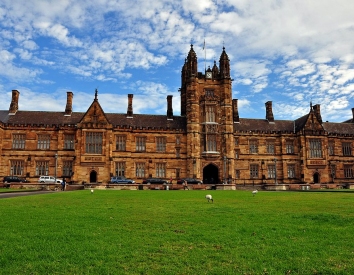Australia could follow the example set by the German system of government to find a way to achieve becoming a republic, writes Daniel Gregory.
IN 1999, Australia voted against becoming a republic. Years later, it's unclear if the country would actually take the step any time soon.
But the royal family, which had enjoyed a couple of decades of relative stability and recovering popularity, is again in the midst of a scandal and the question of constitutional reform for Australia is again in the news.
We all know what went wrong last time. A vast majority of Australians favoured reform but they were split between those who wanted the head of state to be elected by the Parliament and those who wanted the head of state elected by the people. The referendum was a yes/no vote on the parliamentary model and too many who wanted the head of state elected by the people voted for no change at all.
Since then, there has been enthusiasm for a two-stage process. First, a vote on the question of whether Australia should become a republic; if the verdict is affirmative, then a vote on the question of how the head of state should be elected.
It is doubtful that such a process is possible. Australians cannot pre-commit to making some change to the Constitution and then decide which.
It would be possible for Australians to vote first on the question of how the head of state should be elected, if Australia is to become a republic, and then vote on whether the Constitution should be amended so that Australia will become a republic with the head of state elected in the way that a majority preferred in the first vote.
But this would be no better than the process of 1999. Whichever model is preferred in the first instance, both monarchists and those who prefer the other model could vote against it at the second poll — the vote which would actually determine whether the Constitution will be changed.
In practice, Australians can only vote on one possible model at a time.
This raises the question: is there a model which would find majority support? There just might be and inspiration is to be found outside the Anglo-American world which has influenced Australian government and politics so strongly.
In Germany, the Chancellor, currently Angela Merkel, is the head of government, like the Australian Prime Minister. The Head of State is the President, currently Frank-Walter Steinmeier.
The Chancellor is elected by the Bundestag and then appointed by the President. This is similar to Australia, where the leader of the party or coalition which controls a majority in the House of Representatives is appointed by the Governor-General.
What about the President of Germany? Here is where Australia could borrow an idea.
In Germany, every five years (or earlier, if a President leaves office early), a Federal Convention is assembled. The Federal Convention comprises two groups. One of these groups consists of every member of the Bundestag. The other group, of equal size, is determined by the governments of the Federal states. Each Federal state sends a number of representatives proportionate to its size.
Usually, the representatives which a state government sends will themselves be members of that state’s parliament, but they do not have to be. Eminent people and celebrities are also chosen.
The Federal Convention, so constituted, then elects the president.
Would such a system work in Australia? Australians would probably not embrace a model on which a president was elected by an assembly comprising 50 per cent Federal politicians and 50 per cent representatives determined by state politicians. That would not be so different from the model Australians rejected in 1999.
But what if the assembly comprised all Federal parliamentarians plus an equal number of individuals who are directly elected by the people? There is no reason that the latter group should consist of politicians. Australians could elect whoever they wished to sit in this assembly, which would meet only once for the single purpose of electing a president.
People who have earned distinction through service to the community; those who have reached the peaks of their profession; those who have served the country in the military or diplomatic corps; leaders of the indigenous community; ordinary people with stories of bravery and sacrifice — all wound make fine representatives.
The advantage of such a hybrid system is obvious. Both the Parliament and the people would have significant involvement in the process and influence on the outcome.
Those who feel very strongly that an Australian president should be determined by the Parliament alone or by the people alone might dislike this model. But if there is one model which might win majority support – which would sufficiently appeal to sufficiently many people – this might be it. ‘Politics is the art of the possible,’ as the saying goes.
The saying actually comes from Otto von Bismarck, the 19th-Century statesman who was largely responsible for the unification of Germany in 1871. Australia owes the United Kingdom and the United States much for its democratic institutions. Sometimes, though, it is good to look for guidance outside that world, too.
Dr Daniel Gregory completed a PhD in philosophy at the Australian National University. He is now a Humboldt Postdoctoral Fellow at the Eberhard Karls University of Tübingen in Germany.
Related Articles
- Queensland — it's time to stop swearing at the Queen
- An Australian republic: Why it remains our best choice
- Australia is bearing the burden of too many Crowns
- The crucial role of poets in an Australian republic
- Becoming a republic will fix our broken system
 This work is licensed under a Creative Commons Attribution-NonCommercial-NoDerivs 3.0 Australia License
This work is licensed under a Creative Commons Attribution-NonCommercial-NoDerivs 3.0 Australia License
Support independent journalism Subscribe to IA.














